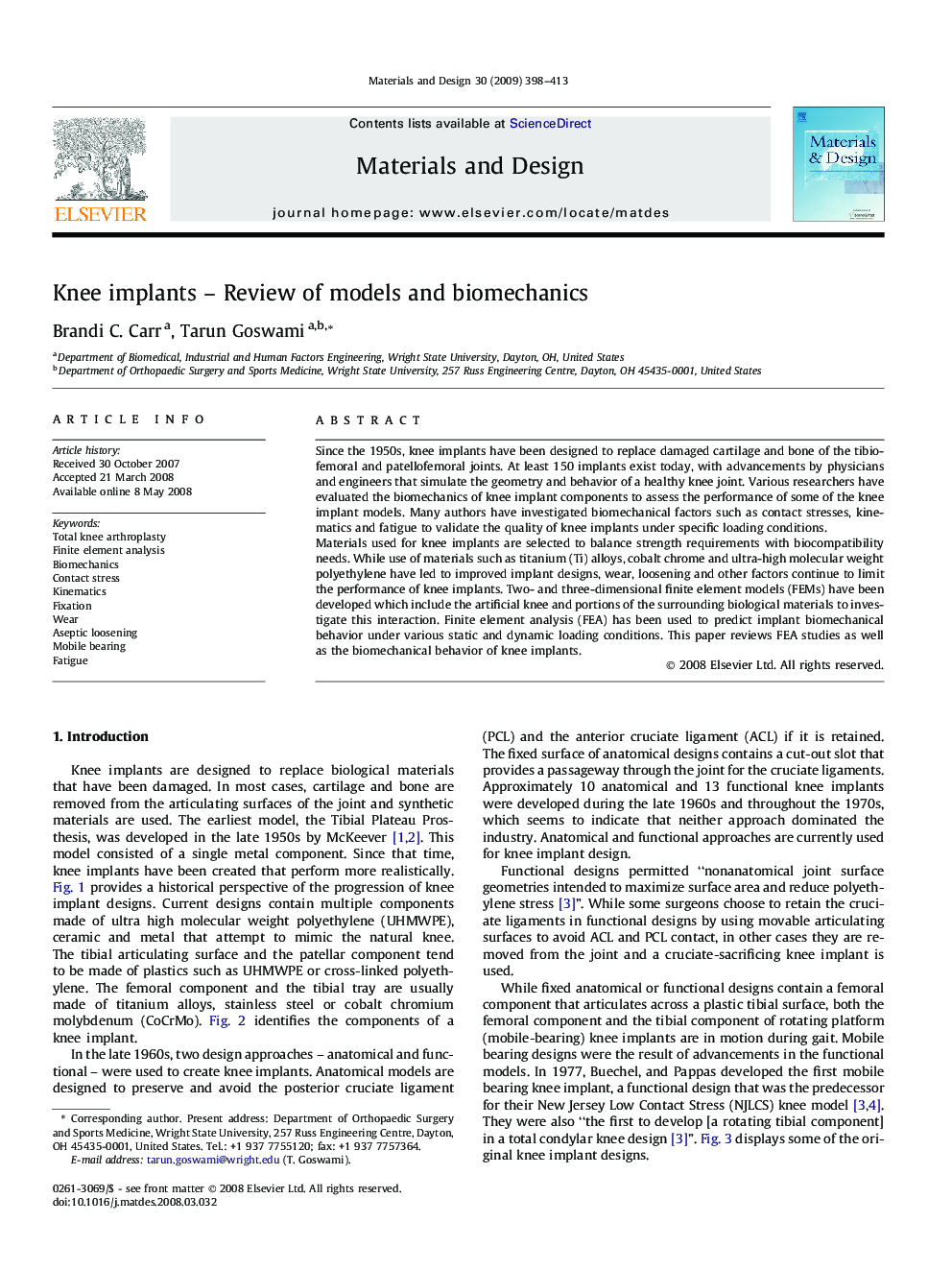| کد مقاله | کد نشریه | سال انتشار | مقاله انگلیسی | نسخه تمام متن |
|---|---|---|---|---|
| 833124 | 908131 | 2009 | 16 صفحه PDF | دانلود رایگان |

Since the 1950s, knee implants have been designed to replace damaged cartilage and bone of the tibiofemoral and patellofemoral joints. At least 150 implants exist today, with advancements by physicians and engineers that simulate the geometry and behavior of a healthy knee joint. Various researchers have evaluated the biomechanics of knee implant components to assess the performance of some of the knee implant models. Many authors have investigated biomechanical factors such as contact stresses, kinematics and fatigue to validate the quality of knee implants under specific loading conditions.Materials used for knee implants are selected to balance strength requirements with biocompatibility needs. While use of materials such as titanium (Ti) alloys, cobalt chrome and ultra-high molecular weight polyethylene have led to improved implant designs, wear, loosening and other factors continue to limit the performance of knee implants. Two- and three-dimensional finite element models (FEMs) have been developed which include the artificial knee and portions of the surrounding biological materials to investigate this interaction. Finite element analysis (FEA) has been used to predict implant biomechanical behavior under various static and dynamic loading conditions. This paper reviews FEA studies as well as the biomechanical behavior of knee implants.
Journal: Materials & Design - Volume 30, Issue 2, February 2009, Pages 398–413